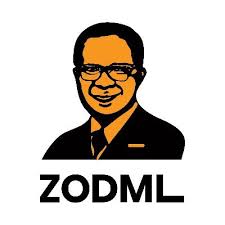How Wide is the Gender Digital Gap?
By Lenient Amidu
A few years ago, I was a second-year secondary school student studying for her examinations. During the exam, one of the courses we had to take was 'Data Processing', which was a modified form of computer science. I struggled to understand the subject throughout the school year for two reasons.
Firstly, I only had access to computers during my school's official laboratory hours, which were brief. What's more, I did not have a phone, laptop, tablet, or access to the Internet at home. My father and mother owned the only phones available, and we were not allowed to get close to them for any reason. In a class with about fifty students, with a fair number of girls at the time, only two had a phone. The majority of the boys, on the other hand, had phones and even laptops. As a result, they performed better in the subject than girls.
Many women, young and old, in or out of school, never get the opportunity to own a phone or utilize the Internet for a significant portion of their lives. What does this signify for the world as it stands in 2024? How much access do both genders have to technology and the Internet? Is there an inequity gap in access to the Internet and technology? Gender digital divide is the gap between both genders access to and use of technology, the Internet and/or mobile phones which may reflect inequalities. These are still pertinent topics in today's world, as data shows that the gender digital divide is growing by the day.
Years later, I was awaiting admission into university. I had gotten my first phone and developed an interest in graphic design, coding, Web 3 and other related fields. It seemed as if I had entered a completely different world. A world where technology and fresh developments in artificial intelligence were continually in my view. I made up my mind to learn as much as possible about graphic design. A friend paid for a month-long graphic design course for me. There were only three girls in the class, and we were all beginners.
Following the program, I realized I needed a community. A place with other people like me to offer me the encouragement I needed to keep going. I discovered that there were fewer women in several of these places. Another friend connected me to SHE CODES AFRICA and a few other women-centered tech networks, and things changed dramatically. They offer mentorship, scholarship options for young girls in school, and job opportunities for women in technology. This became the link between my story and that of hundreds of women and young girls I have met through various platforms over the last few years.
Currently, there is a global movement to bridge the gender digital gap, but it is still insufficient because of various socioeconomic factors such as lack of access, know-how, and security as a result of affordability, restrictive social norms, illiteracy, lack of digital skills, and technology-facilitated gender-based violence (TFGBV).
To close the digital gender gap, we must first address the root causes by generating economic and educational possibilities, advocating for changes in sociocultural patterns, empowering young women through training and mentoring, and collaborating as a community.
Some Nigerian initiatives championing this movement include Tech4families, She Codes Africa, Girls Get Equal Nigeria, Springster, Women In Tech Nigeria, and others.





